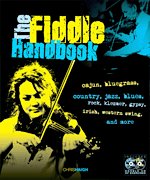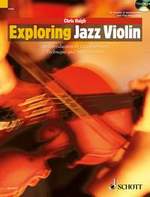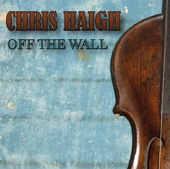
MENU TO FIDDLE STYLES:
Balkan Rhythms in Celtic Music
A couple of years back I had the pleasure of playing with fiddler Sam Proctor, and one of the tunes he showed me was a recent composition Cous Cous Kiss. The tune fitted perfectly into his repertoire of contemporary and traditional Irish music. The only odd thing about it was that it was in 7/8 time. Not many decades ago, such a tune would have been considered outlandish in a Celtic context, whereas today it seems to fit quite naturally into the genre. In this article I will try to shine some light into the origins of these Balkan rhythms, and show how and why they have so successfully entered the Celtic tradition.
The Balkans is a region of south eastern Europe which has a long and unbroken tradition of folk and dance music. The two features which most differentiate their tunes from those of western Europe are the exotic scales or modes, and the complex rhythms. Whereas we are familiar with 2/4, ¾, 4/4 and 6/8, in the Balkans such time signatures as 5/8, 7/8, 11/8 and 13/8 are common. The countries where you can find such tunes include Serbia, Romania, Greece and Albania, but it is in Bulgaria and its neighbour Macedonia that they are most common and highly developed.
Among the most common dances in Bulgaria are the paidushko, or “Old Man’s Hobble”, in 5/8 time. The ruchenitsa is a couple dance in 7/8, with the beats split 12,12,123. A 7/8 tune split as 123,12,12 is a cetvorno. The kopanica is a line dance in 11/8 time, split 12,12,123,12,12, while a postupano is in 13/8, split 12,12,12,123,12,12.
To an outsider such rhythms seem unfathomable and inexplicable. However, once they are broken down into groups of twos and threes they are far easier to get the hang of . Balkan dancers, rather than counting out the beats, simply think of a simple pattern of long (3) and short (2) beats. A cetvorno, for example (123,12,12) would be long, short, short. The emphasis or accent usually lies on the first of the long beat, or group of three. A helpful aid for getting familiar with these rhythms is to choose a memorable phrase which coincides with the pattern of long and short beats. So a 123,12,12 could be “taking a long bath”, while 12,12,123 could be “bacon egg and sausages”
For most of the 20th century, music from the Balkans was little heard in the West, the main sources being the international folk dance movement, and a handful of folk ensembles in places such as Britain, the US and Australia organised by people of Balkan heritage. Recordings making it to the west were few and far between, and travel across the iron curtain was rare. Fortunately for our story, among the few intrepid travellers from the west was Andy Irvine.
Andy Irvine was, in the 1960’s, one of a new breed of Irish musicians who was interested in expanding the scope of Irish traditional music. He looked first towards America, where he travelled and performed with musicians such as Derrol Adams and Ramblin’ Jack Elliot. In 1968, by now a member of the seminal group Sweeney’s Men, he turned his attention eastwards, and undertook a series of trips to the Balkans, returning eventually with a headful of tunes, a collection of LP recordings, and an abiding excitement and enthusiasm for the dizzying rhythms of Bulgaria. He eventually managed to persuade some of his fellow musicians to join him in attempting to play some of these tunes back in Ireland. By 1974 he was in the group Planxty, and together, on the band’s second album Cold Blow and the Rainy Night, they recorded “Mominsko Horo”, along with a song “B?neas?'s Green Glade” in which Irvine recalled his Bulgarian adventures. The tune proved popular, and was followed on their next album After the Break with “Smeceno Horo”. Both these horos are very complex, containing a mixture of time signatures, and quite possibly a fair measure of mis-remembering and misinterpretation. Nevertheless, musically they were a bold and highly influential addition to the musical vocabulary of the traditional revival in Ireland, and many other musicians were intrigued. Another version of Mominsko Horo was recorded 1n 1990 by guitarist Arty McGlynn and fiddler Nollaig Casey on their album Lead the Knave.
In 1981 Timedance, a piece composed by Bill Whelan and Donal Lunny was performed by Planxty during the interval of the Eurovision song contest in Dublin.
In 1992 Irvine, along with uillean piper Davy Spillane and producer Bill Whelan, recorded an album entirely of Bulgarian and Macedonian tunes. This album, East Wind, showed without doubt that Balkan and Irish musical styles could be successfully fused. It was not a commercial success, but Bill Whelan incorporated many of the ideas into his composition Riverdance for the interval performance at the 1994 Eurovision Song Contest in Dublin. A year later this expanded into the Riverdance theatre show, which rapidly became a worldwide sensation. Many of the musicians from East Wind were included in the Riverdance band, including Davy Spillane, Mairtin O’Connor on accordion, Kenneth Edge on sax, and Nicola Parov on gadulka (Bulgarian fiddle), kaval (Bulgarian flute) and gaida (Bulgarian bagpipe). By no means all the tunes in Riverdance are Balkan- inspired, but “Marta’s Dance” is pure 15/8, “Firedance” has some 7/8, and the main Riverdance theme has some 14/8 sections. The rhythmic kick and excitement of these rhythms is undoubtedly one of the keys to the musical success of the show, along with the overall demonstration that Irish traditional music, far from being dusty and old fashioned, could easily find a central place in this shiny, modern multicultural fusion. Whether consciously or otherwise, Riverdance was the vehicle by which Balkan rhythms entered the consciousness of every Celtic traditional musician from that moment on.
It was only a matter of time before others took up the challenge. One of the first bands off the starting block was the innovative and influential Anglo/Irish band Flook. Their second album Flatfish in 1999 included “Gentle Giant”- a pair of tunes including a traditional Macedonian oro, and a self-composed tune- both in 7/8. Their next album Rubai, in 2002 included another 7/8 tune, “Kalamatianos”, while their 2005 album Haven had “Wrong foot forward”- a set starting yet again in 7/8. Michael McGoldrick, who left Flook in 1997, released a solo album Fused in 2000, which opens with his own 7/8 tune “Waterman’s.” McGoldrick was in the band Lunasa, when they recorded their eponymous first album in 1998, and this included “Feabhra”, a three part set finishing with the 7/8 tune “Thunderhead”, written by flautist Greg Larsen. This tune had previously been recorded by Scottish piper Hamish Moore on his album The Bees Knees with sax player Dick Lee in 1991.
Whilst the flute had a natural Bulgarian counterpoint in the end-blown instrument known as the Kaval, for the bagpipes, it was the Gaida. Nicola Parov of Riverdance fame had shown the world what the gaida could do. The world of bagpiping is both well organised and highly competitive, so it is no surprise that many pipe bands, both in Scotland and elsewhere, began including Balkan or Balkan-inspired tunes in their repertoire. The Clan Sutherland Pipe Band, for example, have an excellent kopenitsa (11/8) on their 1995 album Pipes and drums of Scotland. The Scottish band Pipedown, featuring piper Lee Moore, have a 15/8 tune- the second half of “Conrad the Bulgarian” on their album The First Measure (2002).
The fiddle has its Bulgarian counterpart in the Gadulka. This is a pear-shaped instrument played vertically. Without a fingerboard and with the strings stopped with the back of the fingernails rather than the finger pads, this is a very difficult instrument for the outsider to master. Nevertheless, the sound, though very distinctive, is at least in the same ball park as the fiddle. The Bouzouki, with which Andy Irvine first brought Balkan music to Ireland is itself a Greek instrument, but has now become an integral part of Celtic music- has its Bulgarian counterpoint in the Tambura. The accordion is common in Bulgaria as it is in Ireland.
It is perhaps the similarity of instrumentation which is part of the reason why Celtic and Balkan music seem so compatible. Another reason is probably that, once you have got the hang of the rhythms, many Balkan tunes, particularly those in 7/8, are actually quite easy to play. They are often based on a very simple question and answer structure, which makes them accessible to read and to listen to, and also easy to compose. The prolific Scottish accordionist and composer Phil Cunningham wrote a 10/8 tune “Leire’s Welcome to Cozak”, which has been extensively covered by other musicians, including Session A9, Daniel Lapp’s BC Fiddle Orchestra, and Katie McNally, who pairs it with a march, “Cathcart”, also by Cunningham.
There appears to be no problem of mixing Balkan and celtic tunes within a set. Lunasa, for example, have a 2-tune set on The Kinnitty Sessions called “Bulgarian Rock”. Here a celtic fiddle tune, possibly a strathspey, is followed by “Djinovsko Horo”, in 10/8 time. Scottish band Shooglenifty have a set enigmatically titled called “Ful’Tae the Heid O’Troots”. This consists of a 7/8 horo (“Ako Umram Il Zaginam”) sandwiched between a jig and a reel. Sometimes two different Balkan tunes can be grouped together. The London –based Artisan Row recorded the 7/8 tune “Chetvorno Horo”, and paired it with “Macedonian Oro” 1n 13/8 on their 2017 album Wild Winds. “As Creches” is a 2-tunes set by the Breton fiddler Jacky Molard, with a 5/4 tune followed by another in 7/8. This was also recorded by Tola Custy of Clare fiddler Tola Custy, on his 2011 Guidewires album.
For some Celtic musicians, the lure of Balkan rhythms is such that they have gone the whole hog, and formed bands where this is the main focus, rather than just a bit of variety. A fine example of this is Balkan Alien Sound, formed in 2008 by Irish bouzouki player Martin Coyle. Like so many others, he was started on the road after hearing Andy Irvine’s tunes with Planxty in the 1970’s. He subsequently travelled extensively in Eastern Europe. He persuaded some of his friends to join him on fiddle, accordion, guitar, bass and drums, and their singer Aideen McGinn even accepted the challenge of learning to sing in Bulgarian, Serbian and Macedonian. There is also Lazik, a band from Cork, whose main focus is Balkan, along with gypsy and klezmer as well as a sprinkling of celtic music.
There is a line of thinking which tries to keep musical traditions pure and separate, but any study of the history of folk music of any description will show that intermixing and the absorption of outside influences has always been a vital part of music creation. The apparently unstoppable influence of the Balkans on Celtic music can only be a good thing!


